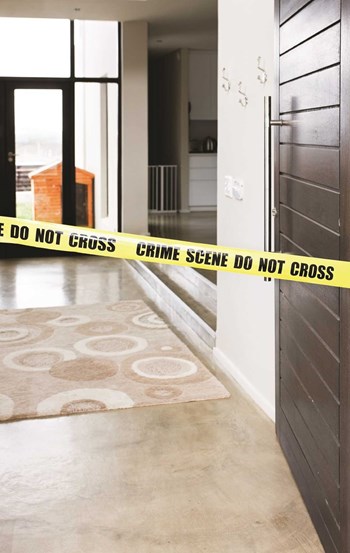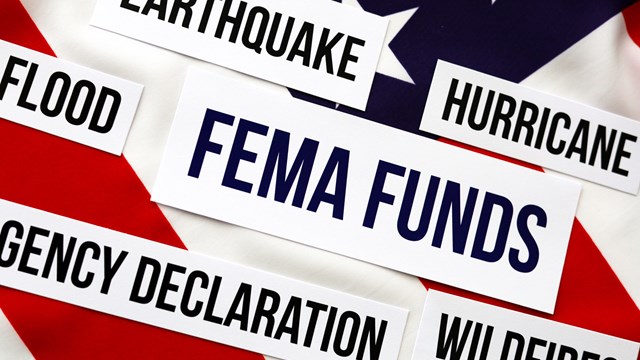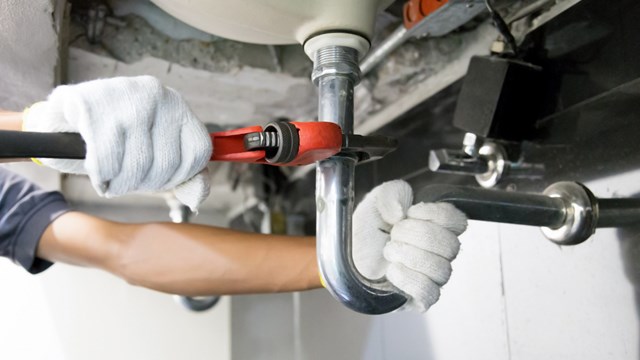
Big or small, disasters often strike out of the blue. They catch us unaware, flatfooted and feeling helpless at their impact. This is especially true when these events hit us at home or within our shared communities. When fire, flood, hurricanes or even death occur, residents and neighbors can be left feeling frightened and adrift and look to the board and property management for guidance and help. That is why it is so important for communities and associations to have action plans in place and be prepared as best they can be for the unexpected.
It Happens to Everyone
For residential communities, “Unplanned situations from fires to flooding can happen anytime,” says Matthew Providente, director of operations and compliance for AKAM Living Services, based in New York. “There is always the off chance that a large natural disaster could occur, and we are called upon to manage the remediation from those kinds of events. Big mess situations can cause disruptions to utilities that may last for an extended period of time, as we experienced here in New York City in the aftermath of Superstorm Sandy. And we must be prepared to create quick fix solutions while strategizing a long-term, effective plan to resume normal operations.”
Other major disasters can be even smaller in scale but just as devastating. These involve the aftermaths of violent domestic incidents, and the accidental or unattended deaths of individuals without family or friends who may not be found for days afterward. While these situations may only involve one unit, their impact can be felt by neighboring units or throughout the whole building, says Michael Olsen, CMO for Aftermath Services, LLC of New York.
What to Do When Things Get Bad
When disaster strikes, the men and women in charge must prioritize and focus on what matters most: the well-being of their residents. “It is imperative for management to have an emergency protocol established and to provide that protocol to all staff members so they know what to do and whom to call in the event the manager is not immediately available,” says Providente. “No work should commence if the situation requires the authorities to investigate, i.e., in the case of a fire and a need for the FDNY to conclude its origin-and-cause investigation.”
If a loss of life is involved, it is important to act quickly but cautiously while remembering legal and other possible long-term issues. “Depending on the type of incident, call the police,” says Olsen. “Having said that, as a property owner/manager, first and foremost, you should have an exposure control plan that dictates how to handle a biohazard situation, just like you would have a plan for fire or tornado.”
Firms such as Aftermath will help co-op and condo communities put this type of plan together. Steps may include directions to “quarantine or contain the biohazard,” Olsen says. “This can be done using biohazard or police line tape, caution cones or something similar to create a barrier. This will prevent cross-contamination and protect anyone who may be walking through the area.”
Once the area is contained, staff must be notified, says Olsen. “You want to make as much of the staff aware of the situation (so they can) police the area until a cleanup crew arrives. You may also want to evacuate people from the surrounding area to lessen the risk. Once you have the area secured, you want to contact your licensed biohazard company. And, of course, contact your insurance provider.”
Once safety is established, it’s time to start thinking about mitigating the emergency and beginning the process of recovery. Calls should go out quickly to service contractors such as a plumber, electrician or tree removal service that can contain the situation and prevent it from getting worse. The next round of calls should go to the insurance company.
Finding the right company to make those repairs falls under the purview of the management and board. And it helps enormously if these companies are part of a pre-existing plan of action. “An effective management company maintains long-term relationships with professionals, vendors and contractors who will respond immediately and work favorably on the building’s behalf in an emergency situation,” says Providente. “It is difficult to bid out jobs that need to be addressed right away. For this reason, a management company with reliable and trustworthy vendors at the ready is most desirable. The management company will work with their regular vendors to assist residents in getting back to their typical routine, such as laundry services or storage facilities.”
Being Prepared
As Olsen suggests, preparation can pave the way for better outcomes for residents and communities as a whole. Andrew Yurchuck, president of the American Bio-Recovery Association (ABRA) and CEO of BioClean in New Jersey, suggests that associations and boards need to come up with a plan long before disaster or biological cleanups are ever needed. “What if there’s a flood, fire, crime scene or someone passes away unattended—you need to have a company in mind to take care of these things,” Yurchuck says. Especially when there is loss of life, “you want to act quickly. There’s a responsibility to the other people in proximity” to the event.
Yurchuck also underscores the importance of being prepared for the legal ramifications of a death on your premises, especially those that involve the loss of someone who may have lived alone or is without close next of kin. “Let’s say you have to go in and clean up after a death,” he says. “The association has to be very careful going in to authorize the cleanup. Maybe someone passed away on a couch in their unit, for example. That couch has to be disposed of, but then the next of kin may protest and say ‘You threw out our sofa.’ You have to coordinate with your legal department to stay out of trouble.”
Olsen agrees. “As for individuals without any next of kin, the biggest liability is allowing the process set forth to play out. Some states require you to wait 30 days before you are able to remove the personal property, and from there, it may need to be stored somewhere else for a specific time frame. You need to fully understand both what your rights are as the property owner or manager, as well as the tenant’s rights. However, this does not mean that you don’t have the ability to protect the property and other residents.”
Other liability issues include a cleanup that may be done improperly, or by individuals who are not licensed to carry out the process. “If the situation is not handled properly, the management and owners are at risk of a lawsuit if someone were to become exposed,” Olsen says. “The most common threats are asking untrained employees to clean up biohazard situations or hiring a company that is not licensed, insured or capable of handling these situations.”
Making Things Right Again
Repairs and rebuilding after a disaster or emergency situation will go more smoothly if everyone knows their roles and if the community as a whole feels informed and comfortable with the plan of action. “Management should be experienced in managing such situations in order to effect remediation as quickly as possible and also to convey confidence, leadership and professionalism to the board, owners and residents,” says Providente. “In situations that demand significant management strength, a board that has confidence in their manager should allow the manager to take the lead in handling the situation, vendors, contractors and any involved agencies. Most important, management should direct staff in what tasks to perform and how to comport themselves relative to companies and agencies that may visit the property, and management should work directly with the board to provide owners and residents with immediate and ongoing communications that are accurate, current and informative. Communication in near-crisis or crisis situations is paramount.”
Cleaning up after disasters such as fire and water issues can be extensive, and should be handled by a team of professionals. Following a fire, for example, the first step is to secure the affected area by boarding up the site. After fire officials complete their investigation, the building will be released and restoration can begin. This process starts usually with demolition and the removal of contents damaged by smoke, fire and water.
For situations involving wind and storms, roofs often sustain the greatest damage. When that occurs, the first step is usually to conduct temporary repairs to prevent water damage. Then after the insurance claim is put through, a determination can be made as to whether or not the roof requires full or only partial replacement. Evaluating wind damage is a scientific process and commonly involves engineers with specialized expertise in evaluating wind damage to buildings.
In the rare instances when violent crime, suicide or accidental death brings tragedy to a community, cleaning up the scene requires highly specialized contractors. And management needs to make sure that the right firms are on call should the need arise.
“You need to really establish that your company has specific environmental insurance,” says Yurchuck. “There are companies that advertise but are not certified. You need to check their credentials and check their insurance. A janitorial company can clean but may not do it properly.”
And the improper cleaning of a biohazardous situation can have significant ramifications, including the possibility of a future resident getting ill. These risks can include blood-borne pathogens such as AIDS, hepatitis, MRSA and other staff infections, says Olsen. “The biggest environmental risk is the disposal of medical waste and it needs to be accomplished according to the specific state’s regulations.”
Fortunately, the American Bio-Recovery Association can help communities find reputable providers either via their website or through their organization’s toll free number. “We vet companies to make sure they have all their documentation in place and proper training,” Yurchuck says.
The Aftermath
By being prepared and working together, communities can overcome disasters large and small. And it helps to remember that expert help is available should the need arise. Ultimately, these situations may work to bring neighbors, managers and board members closer together while at the same time, making communities stronger.
Elizabeth Lent is a freelance writer and a frequent contributor to The Cooperator.






Leave a Comment